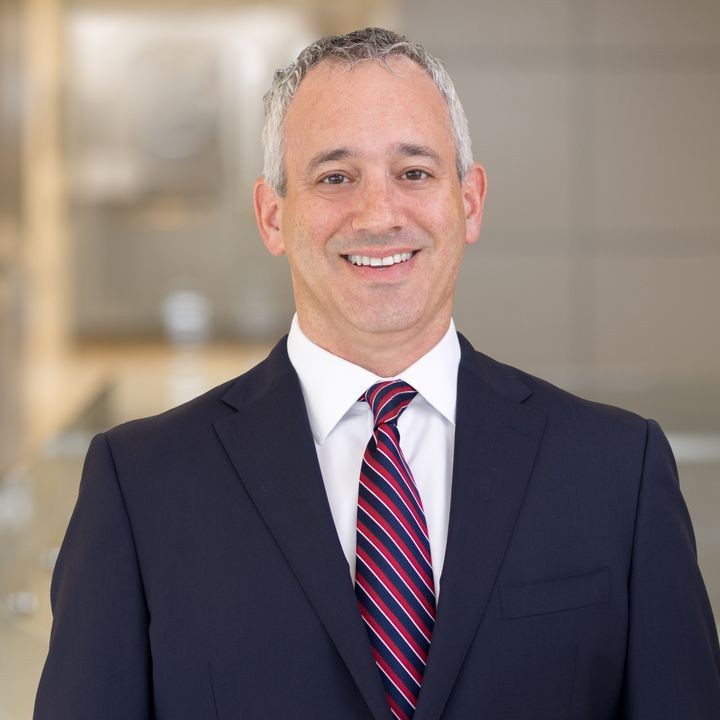CMS Proposes Minimum Staffing Requirements and Enhanced Facility Assessments for Nursing Homes
Client Alert | 8 min read | 09.08.23
On September 1, 2023, the U.S. Department of Health and Human Services, through the Centers for Medicare & Medicaid Services (“CMS”) issued a much anticipated and contested proposed rule that seeks to establish minimum staffing level requirements for nursing homes. The proposed rule represents the first time the federal government has proposed comprehensive nationwide nursing home staffing requirements, although various states have already enacted their own staffing requirements.
Proposed Staffing Standard – 3.0 HPRD
Under the proposed rule nursing homes would have to, at a minimum, have nursing staff sufficient to provide 3.0 hours of nursing staff per resident per day, or 3.0 HPRD.[1] This figure would include 0.55 HPRD from registered nurses (RNs) and 2.45 HPRD from nurse aids (NAs).[2] According to CMS estimates, approximately 75% of nursing homes would have to increase their staffing levels to meet these requirements[3] at a cost of about $40.6 billion over 10 years.[4] CMS also noted that the proposed RN requirement is higher than every state requirement and only lower than the District of Columbia, and that the proposed NA requirement is higher than all existing standards based on September 2022 data.[5] In addition to the HPRD standard, the proposed rule would also require nursing homes to ensure a registered nurse is on site 24 hours per day, 7 days per week. This requirement would be separate from the facility’s Director of Nursing, which is often staffed by an RN.[6]
Two days before the proposed rule was announced, a CMS-commissioned report from an often used outside consultant leaked. The report was apparently used to inform the staffing standard but did not recommend a specific staffing level. The report evaluated four staffing requirements ranging between 3.3 HPRD to 3.8 HPRD, all of which were higher than the 3.0 HPRD proposed by CMS. Interestingly, both the proposed standard and the evaluated range of standards are below the standard that this same outside consultant recommended in 2001 of 4.1 HPRD, which is often cited in False Claims Act cases and enforcement actions by the Department of Justice and state Medicaid Fraud Control Units. The 2001 recommendation of 4.1 HPRD consisted of 0.75 HPRD from registered nurses, 0.55 HPRD from licensed practical nurses, and 2.38 HPRD from NAs.
CMS’s current proposed 3.0 HPRD requirement should also be considered alongside state-specific staffing requirements, which vary significantly based on the types and amounts of nursing staff required. A May 2022 study found that 23 states have standards less than 3.0 HPRD, six states have standards between 3.0-3.49 HPRD, and six states and the District of Columbia have standards greater than 3.5 HPRD. Thus, providers in states with HPRD requirements higher than CMS’s proposed standard—like those in California or New York, which both require a total of 3.56 HPRD—may be less impacted if CMS’s proposed staffing standards are enacted.
Providers will also have to continue to consider resident acuity in addition to any staffing standards. In announcing the proposed rule, CMS stated that “[f]acilities would be required to provide staffing that meets the needs of the individual residents they serve, which may require higher levels of staffing above the proposed minimum standards.”[7]
If the proposed rule is finalized without modification, facilities that fail to meet the proposed staffing standards—and do not receive a temporary exemption, as discussed below—may face termination of provider agreements, denial of payments for Medicare and/or Medicaid beneficiaries, and/or civil money penalties.[8]
Enhanced Facility Assessments
The proposed rule also seeks to revise the existing requirement with respect to facility assessments[9] to provide for more evaluation of, and data on, staffing needs.[10] CMS explicitly noted that the enhanced facility assessments are intended to “guard against any attempts by [facilities] to treat the minimum staffing standards . . . as a ceiling, rather than a floor” and that minimum staffing standards “are only the beginning.”[11]
The proposed rule includes five seemingly overlapping requirements for facility assessments. First, CMS proposes that facilities use the assessments to inform staffing decisions to ensure appropriate staff with the necessary skills are available to meet resident needs as identified in resident assessments and plans of care.[12] Second, CMS proposes that the facility use the assessments to determine the specific needs for each unit, and to adjust staffing as necessary based on any significant changes in the resident population.[13] CMS noted that the current payroll-based-journal (“PBJ”) system does not allow for such insights into staffing in specific units, particularly for units that may require higher levels of care, such as memory care or ventilator units.[14] Third, CMS proposes that facilities consider the staffing needs for each shift, such as night or weekend shifts that often have lower staffing levels.[15] Fourth, facilities would have to use their facility assessment to develop and maintain a staffing plan to maximize recruitment and retention of nursing staff.[16] Fifth, CMS proposes that facilities use the assessment to inform contingency planning for events that may impact resident care but do not rise to the level of activating the facility’s emergency plan, such as unavailability of direct care nursing staff.[17] Facilities would also have to include, as part of the assessment, input from staff members, including nursing home leadership, management, direct care staff and their representatives, and staff providing other services.[18]
Since nursing homes are already required to conduct facility assessments to determine staffing in accordance with resident needs, the new details required by CMS may already be built into a facility’s current assessments. However, providers may be required to consider how to best highlight or supplement the analysis on these issues.
Phased Implementation
Recognizing the difficult staffing realities facing nursing homes, especially those in rural or underserved communities, CMS proposed a staggered procedure for implementing the proposed staffing requirements. Rural facilities would have 60 days from the effective date, which would be the publication of the final rule in the Federal Register, to meet facility assessment requirements, three years from the effective date to meet the proposed 24/7 RN requirement, and five years from the effective date to meet the HPRD requirements.[19] Urban facilities would also have to conduct the facility assessment within 60 days from the effective date, but would have two years from the effective date to implement the 24/7 RN requirement and three years from the effective date to implement the HPRD requirements.[20]
Proposed Exemptions
Nursing shortages appear to be the motivating principle behind CMS’s proposed exemptions to its proposed staffing standards. In order to qualify for a temporary hardship exemption from the proposed staffing standards, a facility must satisfy four criteria. First, CMS would determine whether the facility is in an area where the supply of applicable nursing staff is 20%-40% below the national average provider-population ratio, as determined by CMS using data from the Bureau of Labor Statistics and the Census Bureau, or if the facility is twenty-miles or more from the nearest nursing home.[21] Second, the facility would have to demonstrate its good faith efforts to hire and retain staff, including through a recruitment and retention plan, and job postings that offers prevailing wages.[22] Third, the facility would have to show a “demonstrated financial commitment” to staffing based on the financial resources the facility expends annually on nurse staffing relative to revenue.[23] Lastly, the facility must be surveyed to assess the health and safety of its residents.[24]
However, a facility will not be eligible for an exemption if it meets any of the listed exclusionary criteria: (1) failing to submit data to the PBJ system; (2) is listed by CMS as a Special Focus Facility; (3) has been cited by CMS as having “widespread insufficient staffing with resultant resident harm” or “a pattern of insufficient staffing with resultant resident harm”; or (4) has been cited at the immediate jeopardy level of severity with respect to insufficient staffing as determined by CMS sometime in the preceding 12 months.[25]
Facilities granted exemptions will be noted on the Care Compare website. Although the proposed exemptions would permit facilities a temporary reprieve from the minimum staffing requirements, CMS explicitly noted that each “facility must still comply with its statutory and regulatory obligations to have sufficient staff to assure resident safety, and to attain or maintain the highest practicable physical, mental, and psychosocial well-being of each resident.”[26]
CMS Requests Input on Alternative Staffing Standards
In addition to seeking public comment on the staffing standards in the proposed rule, CMS is also seeking input on alternative staffing standards, including a 3.48 HPRD standard, which would still include 0.55 HPRD from RNs and 2.45 HPRD from NAs.[27] CMS estimates that it would cost of $4.25 billion per year to meet the 3.48 HPRD standard.[28]
Conclusion
CMS’s proposed rule generated significant attention from industry and consumer groups before it was unveiled and will likely generate significant public comments from various stakeholders. In anticipation of some form a final staffing standard, providers may want to submit comments to CMS explaining how federal staffing standards may impact their operations and interact with any state staffing requirements, the impact of anticipated changes to facility assessments, and how to document the various exemption criteria. Comments must be submitted to CMS by November 6, 2023. If you need any assistance in submitting a comment, please contact any of the authors of this Alert.
[1] Department of Health and Human Services, Centers for Medicare & Medicaid Services, Minimum Staffing Standards for Long-Term Care Facilities and Medicaid Institutional Payment Transparency Reports at p. 5-6 available at https://public-inspection.federalregister.gov/2023-18781.pdf (the “Proposed Rule”).
[2] Id. at 5-6.
[3] Department of Health and Human Services, Centers for Medicare & Medicaid Services, HHS Proposes Minimum Staffing Standards to Enhance Safety and Quality in Nursing Homes, Press Release dated September 1, 2023, available at https://www.cms.gov/newsroom/press-releases/hhs-proposes-minimum-staffing-standards-enhance-safety-and-quality-nursing-homes (“CMS Press Release”).
[4] Proposed Rule at 150.
[5] Id. at 25.
[6] Id. at 5, 66.
[7] CMS Press Release.
[8] Proposed Rule at 9.
[9] 42 CFR 483.70(e).
[10] Proposed Rule at 8.
[11] Id. at 45, 78.
[12] Id. at 76.
[13] Id. at 76.
[14] Id. at 76.
[15] Id. at 76.
[16] Id. at 76-77.
[17] Id. at 78.
[18] Id. at 73-76.
[19] Id. at 93.
[20] Id. at 93.
[21] Id. at 85.
[22] Id. at 85-86.
[23] Id. at 86.
[24] Id. at 84.
[25] Id. at 225-226.
[26] Id. at 84.
[27] Id. at 60.
[28] Id. at 203.
Contacts
Insights
Client Alert | 6 min read | 01.16.26
Trump Administration Rolls Out New DOJ Division for National Fraud Enforcement
On January 8, 2026, the Trump Administration announced the creation of a new Division for National Fraud Enforcement within the Department of Justice (DOJ). The division will be led by a newly appointed Assistant Attorney General (AAG), pending Senate confirmation, who will report directly to both the President and Vice President and operate out of the White House. Such a reporting structure is unprecedented in the history of the DOJ.
Client Alert | 4 min read | 01.15.26
Access to Public Domain Documents Pilot: Practice Direction 51ZH
Client Alert | 4 min read | 01.14.26
Client Alert | 3 min read | 01.13.26





